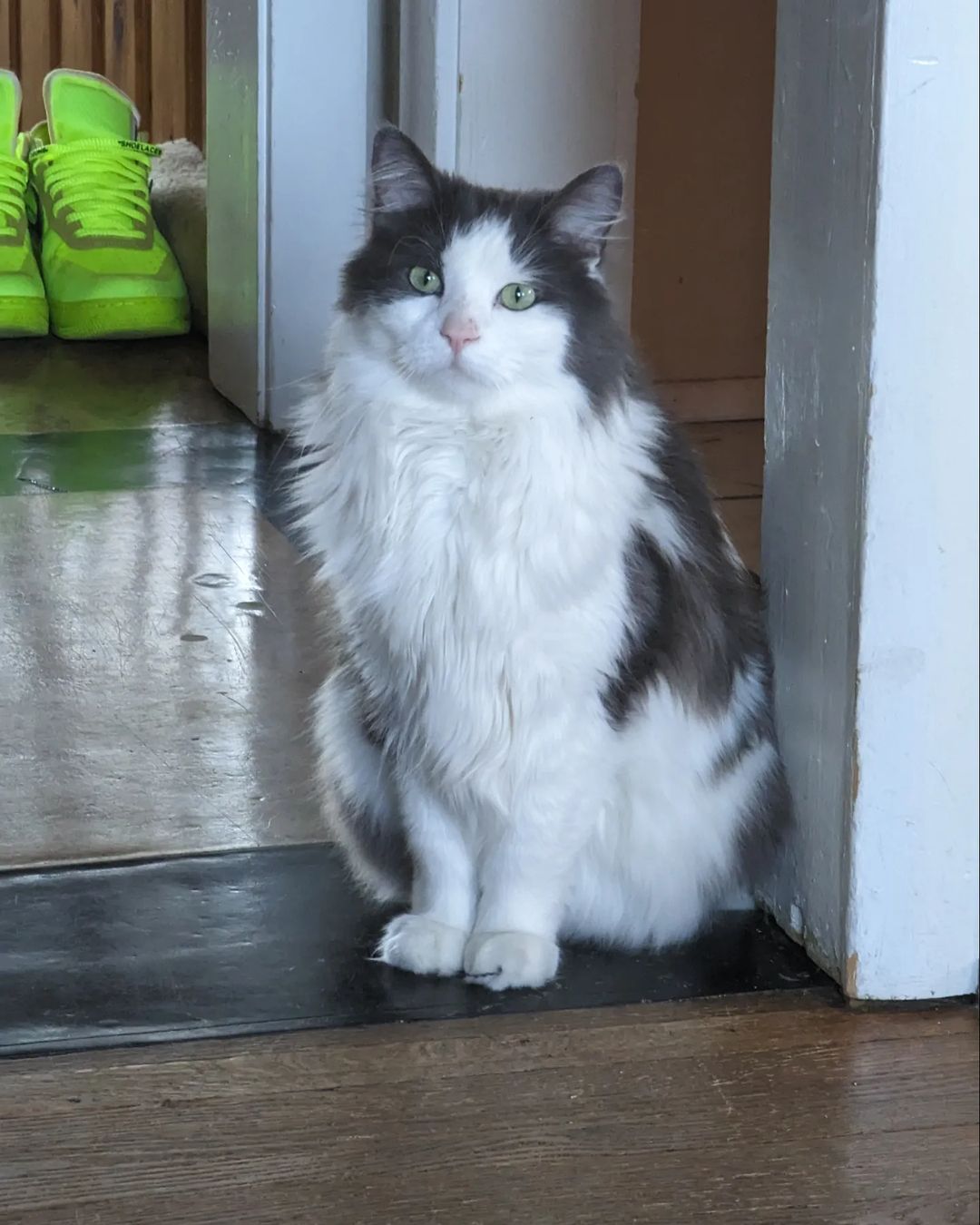Yes, it’s intentional. It represents the difficulty in keeping one’s balance. For reference, check squat toilets:
Jose A Lerma
Someone upon which nothing is wasted.
- 0 Posts
- 21 Comments
Nah, they’d still be extinct: https://en.wikipedia.org/wiki/Passenger_pigeon#Hunting
After being opened up to the railroads, the town of Plattsburgh, New York, is estimated to have shipped 1.8 million pigeons to larger cities in 1851 alone at a price of 31 to 56 cents a dozen. By the late 19th century, the trade of passenger pigeons had become commercialized
Even if adjusted for inflation, 31 cents a dozen doesn’t sound like a lot, but then market saturation happened and your prediction came to pass:
The price of a barrel full of pigeons dropped to below fifty cents, due to overstocked markets. Passenger pigeons were instead kept alive so their meat would be fresh when the birds were killed, and sold once their market value had increased again. Thousands of birds were kept in large pens, though the bad conditions led many to die from lack of food and water, and by fretting (gnawing) themselves; many rotted away before they could be sold.
Those who don’t learn from the past are something something
You might as well be drinking coca cola if you’re going that way.
Yep, a 16 fl oz Peppermint White Chocolate Mocha with whipped cream has 72g of sugar.
A 16 fl oz [Bottle of Pepsi] (https://www.pepsicoproductfacts.com/Home/Product?formula=35005*26*01-01&form=RTD&size=16) has 55g of sugar.
Recommended daily amount of sugar? 25g for women and 38g for men.
This is why I drink unsweetened green tea or water now.

 10·4 months ago
10·4 months agoSome of us aren’t exactly desirable and I refuse to marry someone for purely financial reasons, I want to, you know, actually love the person I marry…
Sadly, some are:
So it came as no surprise when a new study by CIA Landlord recently revealed that Tinder users who specify that they own a property in their profile receive 57% more matches than those who don’t.
🎶She likes me for me🎶
🎶Not because I own property🎶
🎶Or because I’m such a hottie🎶

 2·4 months ago
2·4 months agoThat’s some good diligence!
It looks like the ecoflow values are lower:
https://www.inchcalculator.com/convert/kilowatt-to-btu-per-hour/
Since one kilowatt is equal to 3,412.14245 btu per hour
30 KWh/day x 365 days x 3,412 Btu/KWh = 37,361,400 Btu
Which is half the value I found for 2015. Does ecoflow have more current data and houses are twice as efficient? Maybe. They’re also trying to sell something, so maybe it’s based on data from their products. They don’t mention where they got it from.
The welovecycling conversion is off by 1000 (maybe the kilocalorie threw them off?)
https://www.inchcalculator.com/convert/joule-to-kilocalorie/
Since one kilocalorie is equal to 4,184 joules
1 kcal = 4,184 J so 1 J = 1/4,184 kcal = 0.00023900573613 kcal
Otherwise, your math was right, just off by 3 zeros, so a household is more like 3.6 bagels per hour.
The nist site also doesn’t specify a unit of time, but if it is 20 watts/hour (Wh) we’d only need to move it 3 places for KWh, or 0.020 KWh.
Too many conversions can introduce errors, so we can go from KWh to kcal directly:
https://www.inchcalculator.com/convert/kilowatt-to-kilocalorie-per-hour/
Since one kilowatt is equal to 860.420815 kilocalories per hour
0.020 KWh x 860 kcalh/KWh = 17.2 kcalh
Which, yeah, is not much of a bagel per hour. Keep in mind that the daily recommended calories for an average adult is 2000 kcal.
All in all, this was a fun thought experiment, so thanks for looking into it further!

 1·4 months ago
1·4 months agoWe’re actually discussing educational purposes and fair use in this thread:
https://lemmy.world/comment/7787391
So far, the consensus is “probably”

 1·4 months ago
1·4 months agoI agree it’s the court’s decision and that Disney will likely not bring it to court because schools have little as it is and it’d be a PR nightmare.
As to whether it actually is fair use, I also agree with “probably.”
Because of that, any school’s legal team will recommend against permission slips for Disney movies so teachers can just play them without asking for parent approval like every other school

 2·4 months ago
2·4 months agoThe original article doesn’t specify a unit of time:
Most experts agree that nuclear fusion won’t contribute significantly to the crucial goal of decarbonizing by mid-century to combat the climate crisis. Helion’s most optimistic estimate is that by 2029 it will produce enough energy to power 40,000 average US households; one assessment suggests that ChatGPT, the chatbot created by OpenAI in San Francisco, California, is already consuming the energy of 33,000 homes.
Based on context clues, it’s probably consumption per year

 2·4 months ago
2·4 months agoHow much power does the brain consume? In bagels. How many bagels does ChatGPT consume?
The great thing about math is that it’s interchangeable.
https://rpsc.energy.gov/energy-data-facts#collapse-accordion-25-3
The average U.S. household used about 77 million British thermal units (Btu) in 2015
https://www.inchcalculator.com/convert/british-thermal-unit-to-kilocalorie/
The energy in kilocalories is equal to the energy in british thermal units multiplied by 0.252164.
33,000 households x 77,000,000 Btu/household x 0.252164 kcal/Btu = 640,748,724,000 kcal
https://www.webmd.com/diet/health-benefits-bagels
One plain medium-sized bagel – about 100 grams – has about 264 calories
https://www.healthline.com/nutrition/kcal-vs-calories
Instead, the terms calories — capitalized or not — and kcal are used interchangeably and refer to the same amount of energy
640,748,724,000 kcal / 264 kcal/bagel = 2,427,078,500 bagels
Your homework is finding out how much energy the brain consumes in bagels

 4·4 months ago
4·4 months agoJust showing appreciation for “Dewey, Cheatem, & Howe.”
That’s Three Stooges-level of classic comedy, bravo!

 2·4 months ago
2·4 months agoAs with most legal matters, it depends: https://www.copyright.gov/fair-use/index.html
Purpose and character of the use, including whether the use is of a commercial nature or is for nonprofit educational purposes: Courts look at how the party claiming fair use is using the copyrighted work, and are more likely to find that nonprofit educational and noncommercial uses are fair. This does not mean, however, that all nonprofit education and noncommercial uses are fair and all commercial uses are not fair; instead, courts will balance the purpose and character of the use against the other factors below. Additionally, “transformative” uses are more likely to be considered fair. Transformative uses are those that add something new, with a further purpose or different character, and do not substitute for the original use of the work. Nature of the copyrighted work: This factor analyzes the degree to which the work that was used relates to copyright’s purpose of encouraging creative expression. Thus, using a more creative or imaginative work (such as a novel, movie, or song) is less likely to support a claim of a fair use than using a factual work (such as a technical article or news item). In addition, use of an unpublished work is less likely to be considered fair.
I don’t know many schools willing to bother finding out whether the use was fair.

 146·4 months ago
146·4 months agoThe way parents can stop this is by asking the school whether they had a license from Disney to show the movie.
The permission slips are just proof they showed the movie to a large group of people (most likely without a license, because what school has a budget for that?)
 1·5 months ago
1·5 months agoTake their money in exchange for what many consider “food,” typically.
 1·5 months ago
1·5 months agoOh, y’all still have wait staff?
We have “digital kitchens” now: https://stories.whataburger.com/whataburger-debuts-new-digital-kitchen-all-the-flavor-with-more-convenience/
Same wait without the staff, tables . . . or blackjack
Saw a recent video from America’s Test Kitchen where they recommend temping baked potatoes and docking the skins: https://piped.video/watch?v=iG7wEqs9j4E
In the comments, someone said they had potatoes explode after baking, letting them cool for a bit, then re-baking.
Personally, I don’t usually bake enough potatoes to justify turning on the oven, so I microwave them; which is notorious for for getting food everywhere without adequate supervision.
I asked about a good mobile client for Android, and was recommended Revolution IRC.
I mainly use it to keep an eye on my IRC server, but it’s worked well so far
Yep, them New York City rats are tough as nails

 6·10 months ago
6·10 months agoEnhance your calm, John Spartan.

 1·11 months ago
1·11 months agoYou’re welcome, glad to hear it’s helping out!





I mean, thanks to AI, we’ll look back at these kinds of comics and reminisce about how artisanal they are, and how they don’t make them like this anymore.
Good times… Good times…